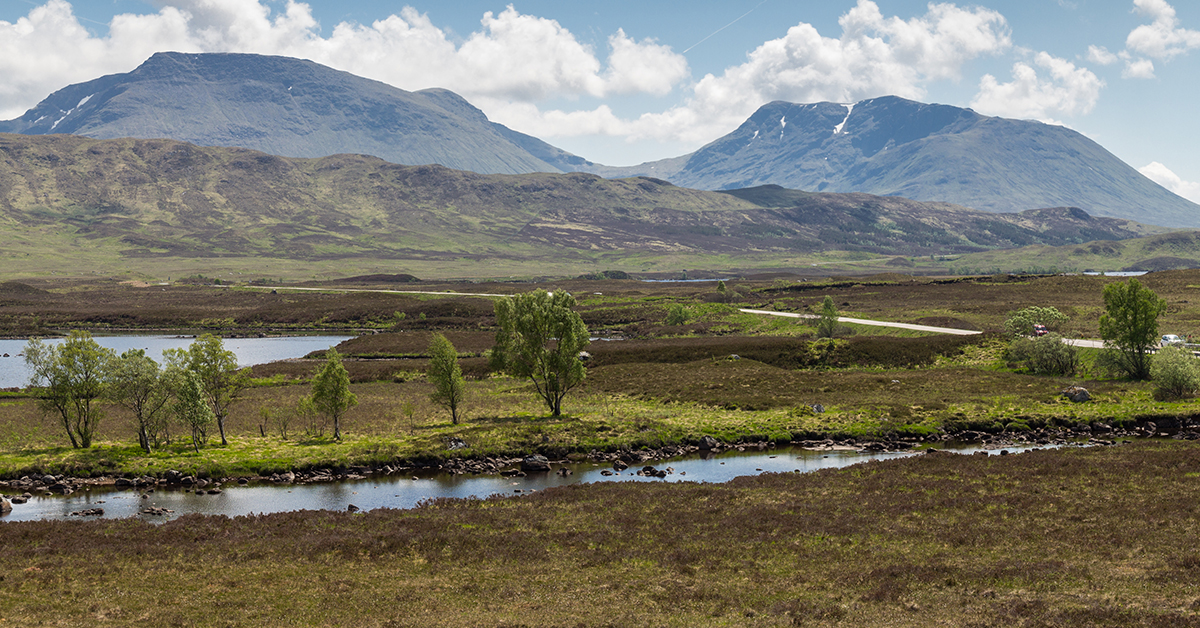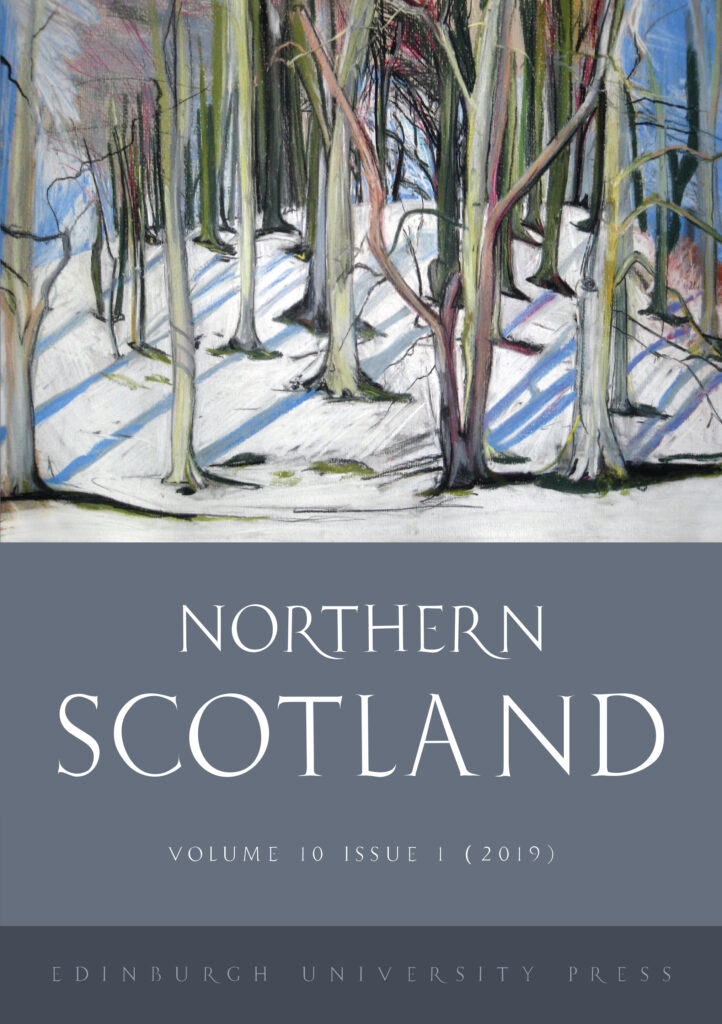
Read the introductory article to our recently released Northern Scotland: Black Lives Matter virtual collection, which can be found on our website and is freely accessible until the end of 2020.
By Jim MacPherson
The racist murder of George Floyd by Minneapolis police officers in May 2020 has led to an extraordinary range of risings against racism across the globe. While the toppling of Sir Edward Colston’s statue in Bristol was the most dramatic of these protests in the UK, the north of Scotland has also seen socially-distanced protests in places such as Thurso and Portree, as well as displays of #BLM banners in North Uist, Hill of Fearn and Inverness (which has inspired a wonderful new art installation by Jacqueline Briggs at Eden Court, the city’s main cultural hub).
This virtual collection of Northern Scotland demonstrates how the region is profoundly implicated in these global debates about racism. A number of the articles collected here make important contributions to broader historiographical debates about the agency of people in the north of Scotland. A key argument here is that the region’s people were not just victims of an incorportating, imperial British state during the eighteenth century but were, in fact, willing and enthusiatic participants in a global enterprise of empire that was rooted in slavery, expropriation and genocide.
Northern Scotland is proud to have published over the last few years a number of important articles which have explored these debates. The work of David Alston has been at the forefront of this, unearthing the full extent of Highland involvement in the slave plantation economies of the Caribbean. In this collection, David’s article ‘A Forgotten Diaspora: The Children of Enslaved and ‘Free Coloured’ Women and Highland Scots in Guyana Before Emancipation’ makes clear that Highlanders played a role at all levels of plantation life, from owning slaves to working as doctors, book keepers and carpenters. This Highland involvement in the Caribbean then had a profound impact on life back here in the region, from investing plantation profits in local institutions (including schools in Inverness, Fortrose and Tain and the Northern Infirmary, which is now the headquarters of the University of the Highlands and Islands) to the ‘mixed race’ children of slaveowners and slaves who were brought back to the Highlands and attended local schools such as Tain Academy.
A key intervention in these debates about the Highlands and slavery came in 2015 at the conference ‘Landscapes and Lifescapes: Material Spaces and Stories of Connection between the Caribbean and the Scottish Highlands’, held in Inverness at the Highland Archive Centre in collaboration with High Life Highland. Our virtual collection includes three articles from this important conference. The event was organised by Karly Kehoe and Chris Dalglish and their article ‘History, Heritage and Sustainable Development’ argues that understanding and acknowledging the full extent of Highland involvement in slave plantation economies is essential if we are to ‘tackle injustices and change unsustainable ways of living’ in the present. One of the historiographical pioneers of Scotland’s involvement in slavery, Stephen Mullen, also contributed to this conference, and his article ‘John Lamont of Benmore: A Highland Planter who Died ‘in harness’ in Trinidad’ provides a detailed account of how one individual amassed wealth from his Caribbean plantation (and from the compensation he received in 1834 following the abolition of slavery) and how this money then flooded into the lower Highlands of Argyll through his maternal family, the Lamonts of Knockdow. The final article in this collection taken from the ‘Landscapes and Lifescapes’ conference is a conversation between two of the participants, Karen Salt and Susan P. Mains. Focusing on the ‘entangled histories and geographies of Scotland and the Anglophone Caribbean’, Salt and Mains explore important questions about the representations of Caribbean histories and the vital nature of community-led research into these issues.
Several articles in Northern Scotland have also explored how postcolonial and black radical ideas can be used as a tool with which to think about the region. In this collection, we feature Jim Hunter’s agenda-setting article ‘History: Its Key Place in the Future of the Highlands and Islands’, where he argues that the work of the French Caribbean intellectual and revolutionary Frantz Fanon, together with that of Palestinian writer and activist, Edward Said, can be used to analyse the peripheralised nature of the Highlands and Islands within the UK state.[1] Building on Hunter’s work, Iain MacKinnon’s article ‘Colonialism and the Highland Clearances’ argues that, since the eighteenth century, the language of colonization was often used by landowners and government agencies to justify changes in land use in the Gàidhealtachd. MacKinnon draws upon the work of Maori scholar and indigenous researcher, Linda Tuhiwai Smith, to demonstrate the need to ‘decolonize’ the region and to use this conceptualisation of the Gàidhealtachd as an internal colony in the past to re-imagine and re-make a future, ‘by way of our own lights’.
We hope that you enjoy this brief selection of work from the pages of Northern Scotland which, hopefully, help us to think and reflect upon some of the broader issues raised by the Black Lives Matter movement. Of course, more is needed and, like all outlets for academic research, it is vital that Northern Scotland continues to explore the full extent of the region’s imperial entanglements and to demonstrate that these legacies of empire continue to shape both landscapes and structures of thought and feeling in the north of Scotland. We need to be more inclusive in our publication strategy by actively promoting the work of non-White scholars. And, above all, we need to actively fight racism by publishing research that helps us to understand the region’s complicity in global structures of inequality and that promotes community activism in the north of Scotland that engages with these issues.[2] As Karen Salt argues in this collection ‘our histories live on in the cracks of the now’ and its vital to acknowledge and then do something about this past in order to promote reparative justice in the present.[3]
[1] See, also, the forthcoming article by Jim MacPherson, which explores Hunter’s use of postcolonial thought in a Highland context. Jim MacPherson, ‘History writing and agency in the Scottish Highlands: postcolonial thought, the work of James Macpherson (1736-1796) and researching the region’s past with local communities’, Northern Scotland, 11:2 (2020).
[2] The work of Mairi McFayden is important here. See, for example, Mairi McFayden, ‘How we see our Highland landscapes’, accessed 13 August 2020.
[3] For a recent example of academic research which promotes reparative justice, see Simon Newman and Stephen Mullen, ‘Slavery, Abolition and the University of Glasgow’, 17 September 2018, accessed 13 August 2020.
Access the Northern Scotland Virtual Collection, which is freely accessible until the end of 2020.
Northern Scotland is a cross-disciplinary publication which addresses historical, cultural, economic, political and geographical themes relating to the Highlands and Islands and the north-east of Scotland.







The reference to a “racist murder” in the opening sentence of this article is unwarranted. The case of George Floyd has not yet been tried before a court. Some of the four officers involved were not white, motive has not been established and there is a history of misreporting of similar cases.